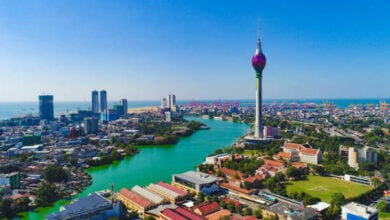White rice blamed for Asia’s diabetes epidemic

More than 60% of people living with diabetes are in Asia. High-yield white rice has been vital to combatting global hunger, but its value is coming into question. Nutritional deficiencies and its links to type 2 diabetes have led to a search for new breeds of mineral-rich rice.
In the countryside of Sri Lanka ,Dr Sirimal Premakumara has discovered many varieties of rice grown there for centuries. Instead of researching new strains, the University of Colombo lecturer spent 10 years studying brown, purple, red and glutinous varieties.
These are still grown in small amounts by farmers in Sri Lanka, often for their own use or the local market, but almost forgotten among piles of cheap white rice.

According to the Guardian, Premakumara has documented 300 types of rice with anti-diabetic, anti-inflammatory and antioxidant properties, potentially vital to combatting global hunger.
Premakumara said…
“It was the farmers who saved these traditional grains. We call it medicinal rice because they claimed it was like medicine, and we just wanted to verify those claims.”
Asia as a whole has lost thousands of varieties through the industrialisation of rice farming over the past century.
Rice is a staple across Asia. More than 90% of the world’s rice is produced there and everyone eats 78kg each year – more than double any other region. It is the main source of carbohydrates and protein because often little else is consumed.
White rice has been milled and polished to remove the nutrient-rich outer layers, and is now closely associated with the continent’s growing problem with diabetes. By 2045, diabetes will affect about 150 million people in southeast Asia, up from 44 million 20 years ago.
While white rice is blamed for Asia’s diabetes epidemic, brown rice contains more fibre and magnesium that lower the risk of diabetes.
New “improved” rice varieties emerged in the 1960s as a way to produce more food. Technological innovations became known as the green revolution and included the creation of high-yield “miracle rice” that allowed countries to become self-sufficient.
Over the past year, the ability to produce and store it in large amounts has helped rice prices remain stable while other staples such as wheat and corn fluctuate because of shipping disruptions caused by the Ukraine war.
Latest Thailand News
Follow The Thaiger on Google News:
































